
Journal Menu
► ▼ Journal Menu-
- Horticulturae Home
- Aims & Scope
- Editorial Board
- Reviewer Board
- Topical Advisory Panel
- Instructions for Authors
- Special Issues
- Topics
- Sections & Collections
- Article Processing Charge
- Indexing & Archiving
- Editor’s Choice Articles
- Most Cited & Viewed
- Journal Statistics
- Journal History
- Journal Awards
- Society Collaborations
- Conferences
- Editorial Office
- 10th Anniversary
Journal Browser
► ▼ Journal BrowserNeed Help?
Announcements
6 September 2024
Horticulturae | Invitation to Read the 2022–2023 Highly Cited Papers in the Section “Viticulture”
It is our honor to present the highly cited papers published by Horticulturae (ISSN: 2311-7524) in 2022 and 2023 in the Section “Viticulture”. We would like to take this opportunity to acknowledge the outstanding individuals and teams whose work inspires fellow researchers and profoundly influences the field of horticulture science. We invite you to read the outstanding works listed below.
1. “Grapevine in the Ancient Upper Euphrates: Horticultural Implications of a Bayesian Morphometric Study of Archaeological Seeds”
by Javier Valera, Gonzalo Matilla-Seiquer, Concepción Obón, Francisco Alcaraz and Diego Rivera
Horticulturae 2023, 9(7), 803; https://doi.org/10.3390/horticulturae9070803
Available online: https://www.mdpi.com/2311-7524/9/7/803
2. “Widely Targeted Metabolomics Provides New Insights into the Flavonoid Metabolism in ‘Kyoho’ Grapes under a Two-Crop-a-Year Cultivation System”
by Guo Cheng, Sihong Zhou, Jinbiao Liu, Qiyan Feng, Rongfu Wei, Huan Yu, Bo Wang, Ying Zhang and Xianjin Bai
Horticulturae 2023, 9(2), 154; https://doi.org/10.3390/horticulturae9020154
Available online: https://www.mdpi.com/2311-7524/9/2/154
3. “Genetic Diversity and Core Germplasm Research of 144 Munake Grape Resources Using 22 Pairs of SSR Markers”
by Shiqing Liu, Haixia Zhong, Fuchun Zhang, Xiyong Wang, Xinyu Wu, Jiancheng Wang and Wei Shi
Horticulturae 2023, 9(8), 917; https://doi.org/10.3390/horticulturae9080917
Available online: https://www.mdpi.com/2311-7524/9/8/917
4. “Vibration Analysis of Pulse-Width-Modulated Nozzles in Vineyard Blast Sprayers”
by Coral Ortiz, Antonio Torregrosa, Verónica Saiz-Rubio and Francisco Rovira-Más
Horticulturae 2023, 9(6), 703; https://doi.org/10.3390/horticulturae9060703
Available online: https://www.mdpi.com/2311-7524/9/6/703
5. “Inter-Row Management and Clay Content Influence Acari and Collembola Abundances in Vineyards”
by Stefan Möth, Sarhan Khalil, Rudi Rizzoli, Magdalena Steiner, Astrid Forneck, Sven Bacher, Michaela Griesser, Pascal Querner and Silvia Winter
Horticulturae 2023, 9(12), 1249; https://doi.org/10.3390/horticulturae9121249
Available online: https://www.mdpi.com/2311-7524/9/12/1249
6. “Identification of Vitis vinifera L. Local Cultivars Recovered in Andalusia (Spain) by Using Microsatellite Markers”
by Ana Jiménez-Cantizano, Anna Puig-Pujol and Rosa Arroyo-García
Horticulturae 2023, 9(3), 316; https://doi.org/10.3390/horticulturae9030316
Available online: https://www.mdpi.com/2311-7524/9/3/316
7. “Characterisation and Identification of Vines from Fuerteventura (Canary Volcanic Archipelago (Spain)) Using Simple Sequence Repeat Markers”
by Francesca Fort, Qiying Lin-Yang, Carla Valls, Pau Sancho-Galán, Joan Miquel Canals and Fernando Zamora
Horticulturae 2023, 9(12), 1301; https://doi.org/10.3390/horticulturae9121301
Available online: https://www.mdpi.com/2311-7524/9/12/1301
8. “Wild Grapevine (Vitis vinifera L. subsp. sylvestris (C.C. Gmelin) Hegi)—Novel Species to the Israeli Flora”
by Oshrit Rahimi, Jotham Ziffer Berger, Ilana Shtein, Mafatlal M. Kher, Suembikya Frumin, Sariel Hübner, Ehud Weiss and Elyashiv Drori
Horticulturae 2023, 9(9), 998; https://doi.org/10.3390/horticulturae9090998
Available online: https://www.mdpi.com/2311-7524/9/9/998
9. “Study of Molecular Biodiversity and Population Structure of Vitis vinifera L. ssp. vinifera on the Volcanic Island of El Hierro (Canary Islands, Spain) by Using Microsatellite Markers”
by Francesca Fort, Qiying Lin-Yang, Luis Ricardo Suárez-Abreu, Pau Sancho-Galán, Joan Miquel Canals and Fernando Zamora
Horticulturae 2023, 9(12), 1297; https://doi.org/10.3390/horticulturae9121297
Available online: https://www.mdpi.com/2311-7524/9/12/1297
10. “Dissecting Seed Proanthocyandin Composition and Accumulation under Different Berry Ripening Process in Wine Grapes”
by Aoyi Liu, Jingjing Wang, Xuechen Yao, Nongyu Xia, Qi Sun, Changqing Duan and Qiuhong Pan
Horticulturae 2023, 9(1), 61; https://doi.org/10.3390/horticulturae9010061
Available online: https://www.mdpi.com/2311-7524/9/1/61
4 September 2024
Horticulturae | Top 10 Cited Papers in 2023
The journal Horticulturae (ISSN: 2311-7524) focuses on all areas and aspects of temperate to tropical horticulture. We invite you to read our most highly cited articles published in 2023 that are listed below.
1. “Effects of Exogenous Melatonin on Chrysanthemum Physiological Characteristics and Photosynthesis under Drought Stress”
by Yan Luo, Taotao Hu, Yunyun Huo, Lingling Wang, Li Zhang and Rui Yan
Horticulturae 2023, 9(1), 106; https://doi.org/10.3390/horticulturae9010106
Available online: https://www.mdpi.com/2311-7524/9/1/106
2. “Bio-Fertilizers Reduced the Need for Mineral Fertilizers in Soilless-Grown Capia Pepper”
by Hayriye Yildiz Dasgan, Mehmet Yilmaz, Sultan Dere, Boran Ikiz and Nazim S. Gruda
Horticulturae 2023, 9(2), 188; https://doi.org/10.3390/horticulturae9020188
Available online: https://www.mdpi.com/2311-7524/9/2/188
3. “Estimating the Ripeness of Hass Avocado Fruit Using Deep Learning with Hyperspectral Imaging”
by Yazad Jamshed Davur, Wiebke Kämper, Kourosh Khoshelham, Stephen J. Trueman and Shahla Hosseini Bai
Horticulturae 2023, 9(5), 599; https://doi.org/10.3390/horticulturae9050599
Available online: https://www.mdpi.com/2311-7524/9/5/599
4. “Effect of Red and Blue Light on Cucumber Seedlings Grown in a Plant Factory”
by Dezhi Jin, Xiaofeng Su, Yuefeng Li, Mingming Shi, Bobo Yang, Wenchang Wan, Xing Wen, Shaojun Yang, Xiaotao Ding and Jun Zou
Horticulturae 2023, 9(2), 124; https://doi.org/10.3390/horticulturae9020124
Available online: https://www.mdpi.com/2311-7524/9/2/124
5. “Bioactive Compounds and Antioxidant Capacity of Several Blackberry (Rubus spp.) Fruits Cultivars Grown in Romania”
by Adriana Ramona Memete, Ioan Sărac, Alin Cristian Teusdea, Ruben Budău, Mariana Bei and Simona Ioana Vicas
Horticulturae 2023, 9(5), 556; https://doi.org/10.3390/horticulturae9050556
Available online: https://www.mdpi.com/2311-7524/9/5/556
6. “Enhancing Antioxidant Properties of Prunus spinosa Fruit Extracts via Extraction Optimization”
by Konstantina Kotsou, Magdalena Stoikou, Vassilis Athanasiadis, Theodoros Chatzimitakos, Martha Mantiniotou, Athanassios I. Sfougaris and Stavros I. Lalas
Horticulturae 2023, 9(8), 942; https://doi.org/10.3390/horticulturae9080942
Available online: https://www.mdpi.com/2311-7524/9/8/942
7. “Exogenous Melatonin Application Induced Morpho-Physiological and Biochemical Regulations Conferring Salt Tolerance in Ranunculus asiaticus L.”
by Eman Abdelhakim Eisa, Péter Honfi, Andrea Tilly-Mándy and Iman Mirmazloum
Horticulturae 2023, 9(2), 228; https://doi.org/10.3390/horticulturae9020228
Available online: https://www.mdpi.com/2311-7524/9/2/228
8. “Effects of Root and Foliar Application of Corn Steep Liquor on Pepper Plants: A Physiological, Nutritional, and Morphological Study”
by Iván Navarro-Morillo, Valeria Navarro-Perez, Rafael Perez-Millan, Eloy Navarro-León, Begoña Blasco, Jose Maria Cámara-Zapata and Francisco Garcia-Sanchez
Horticulturae 2023, 9(2), 221; https://doi.org/10.3390/horticulturae9020221
Available online: https://www.mdpi.com/2311-7524/9/2/221
9. “Transcriptome Analysis of Ethylene Response in Chrysanthemum moriflolium Ramat. with an Emphasis on Flowering Delay”
by Hua Cheng, Min Zhou, Yuyang Si, Wenjie Li, Likai Wang, Sumei Chen, Fadi Chen and Jiafu Jiang
Horticulturae 2023, 9(4), 428; https://doi.org/10.3390/horticulturae9040428
Available online: https://www.mdpi.com/2311-7524/9/4/428
10. “Transcriptomic Analysis of Salicylic Acid Promoting Seed Germination of Melon under Salt Stress”
by Miao Yan, Jiancai Mao, Ting Wu, Tao Xiong, Quansheng Huang, Haibo Wu and Guozhi Hu
Horticulturae 2023, 9(3), 375; https://doi.org/10.3390/horticulturae9030375
Available online: https://www.mdpi.com/2311-7524/9/3/375
3 September 2024
MDPI INSIGHTS: The CEO's Letter #15 - CHORUS, Best Paper Award, August Events

Welcome to the MDPI Insights: The CEO's Letter.
In these monthly letters, I will showcase two key aspects of our work at MDPI: our commitment to empowering researchers and our determination to facilitating open scientific exchange.
Opening Thoughts

I am pleased to share that MDPI is now an Affiliate Member of CHORUS, a not-for-profit organization dedicated to ensuring public access to articles reporting on U.S. government-funded research. This partnership highlights our long-standing commitment to advancing Open Access (OA) publishing and meeting funders’ open research requirements.
Read the full announcement here.

With the White House Office of Science and Technology Policy (OSTP) 2022 memorandum calling for immediate public access to all federally funded research by 2026, this partnership positions MDPI to further support academic institutions in adhering to national mandates while providing authors with fully compliant (CC-BY) OA journals.
The CHORUS platform went live in July 2014 and includes NASA, the U.S. Department of Energy, the U.S. Department of Defense, the U.S. Geological Survey, and the National Science Foundation.
“This partnership positions MDPI to further support academic institutions in adhering to national mandates”
Joining CHORUS perfectly aligns our mission as the leading OA publisher, which is to drive transparency and innovation in scholarly publishing, with that of CHORUS itself, which is to advance Open Access research. It will also support MDPI publications from organizations such as NASA, with 1,200 research papers published by NASA-affiliated authors as at 31 August 2024.
Impactful Research
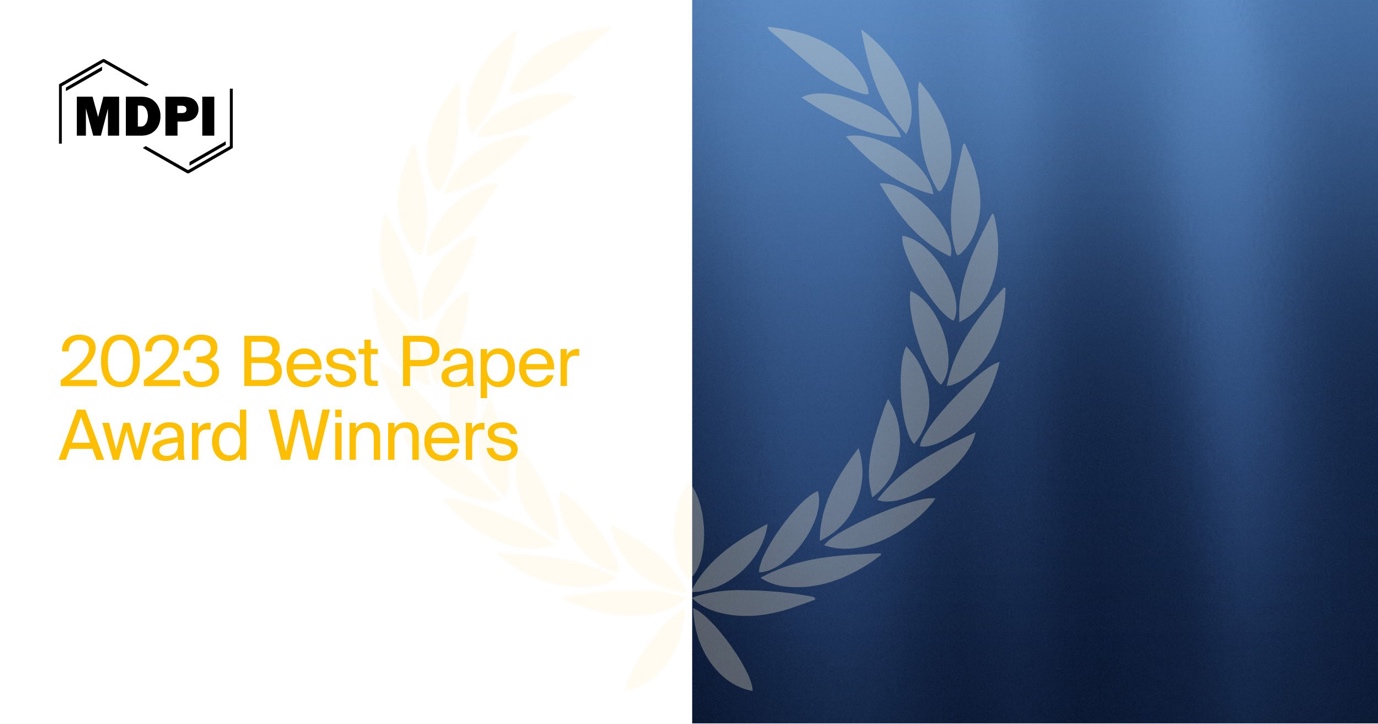
MDPI’s Best Paper Awards—Award-Winning Papers in 2023 Announced
MDPI is committed to supporting and recognizing the academic community and is proud to announce the recipients of the 2023 Best Paper Awards, which recognize high-quality papers of significant scientific merit and impact. Each year, the editors of our journals carefully select papers that showcase outstanding scientific achievement.
This year, 115 Best Paper Awards were presented, chosen from 346 exceptional papers in a highly competitive selection process. Congratulations to the authors for their remarkable contributions!
To learn more about all the awardees and their research projects, visit the following pages:
- Biology and Life Sciences
- Business and Economics
- Chemistry and Materials Sciences
- Computer Sciences and Mathematics
- Engineering
- Environmental and Earth Sciences
- Medicine and Pharmacology
- Public Health and Healthcare
- Social Sciences, Arts and Humanities
- Physical Sciences
About MDPI Awards
MDPI regularly offers various awards to recognize researchers, particularly young scientists, and to promote communication within the scientific community. These awards exist to inspire and acknowledge talented scientists who have made significant contributions to advancing their fields.
To find out more MDPI awards, please click here.
“Our awards exist to inspire and acknowledge talented scientists”
Inside MDPI

MDPI AI Team Presented at EuroSciPy 2024 in Poland
As part of the CEO Letter, I hold dear this ‘Inside MDPI’ section, where I have an opportunity to highlight various projects, teams and updates within our organization. As such, I’m happy to showcase the following presentations from members of MDPI’s Artificial Intelligence (AI) team, which were recently presented at the EuroSciPy 2024 (16th European Conference on Python in Science). This conference took place in Szczecin, Poland from 26–30 August.
“This event was a great opportunity to reinforce our commitment to innovation and excellence in publishing”
MDPI colleagues Frank Sauerburger (AI Tech Leader) and Daniele Raimondi (Senior Data Scientist) both presented at the conference. Frank discussed MDPI’s AI infrastructure, while Daniele showcased a new methodological approach we have been developing to track the journey of rejected academic manuscripts. This approach combines AI, data science and analytics to improve the identification of manuscripts and authors, enhancing our understanding of publishing dynamics.
This event was a great opportunity to reinforce our commitment to innovation and excellence in publishing. It also allowed us to contribute to the academic discussion on integrating AI and data science into scholarly communication.
From data analysis in Jupyter Notebooks to production applications: AI infrastructure at reasonable scale – Frank Sauerburger
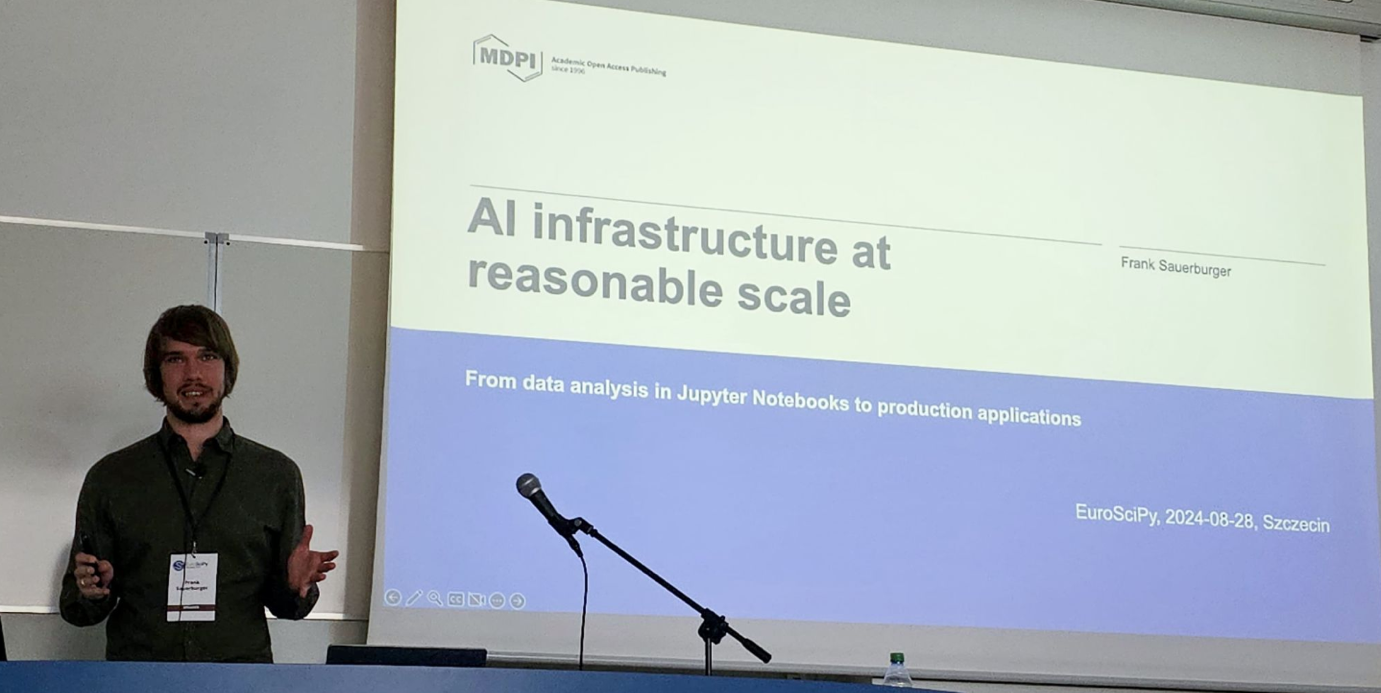
Frank’s presentation on MDPI’s AI infrastructure provided a chance to showcase the advanced technological frameworks that power our operations. Given the technical and academic focus of EuroSciPy, this talk demonstrated how MDPI’s AI capabilities are not only cutting-edge but also central to driving efficiency and innovation in scholarly publishing. Engaging with the EuroSciPy community helps position MDPI as a leader in applying AI within the publishing industry, fostering potential collaborations and attracting interest from top researchers.
A Qdrant and Specter2 framework for tracking resubmissions of rejected manuscripts in academia – Daniele Raimondi
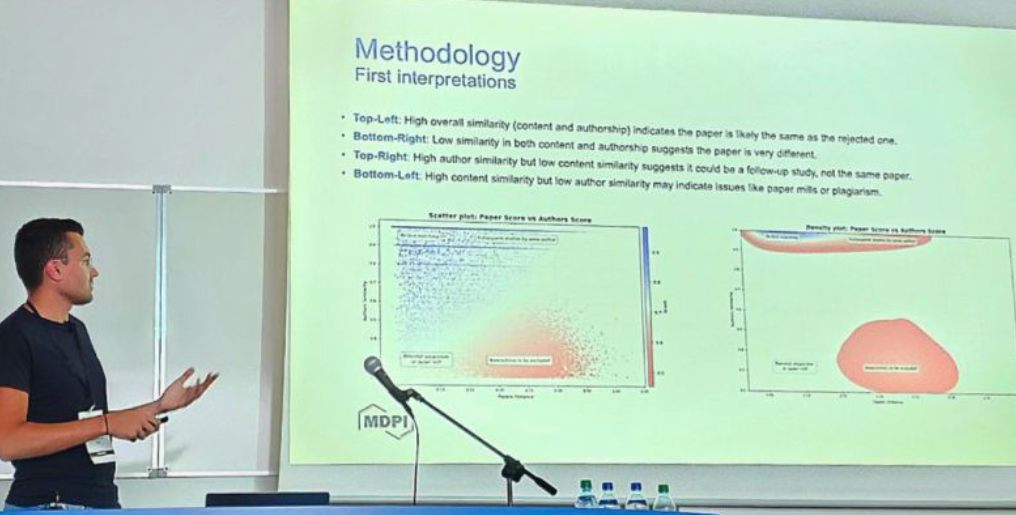
Daniele’s talk on the novel methodological approach that combines AI, Data Science, and Analytics was crucial in highlighting how MDPI is advancing the precision and effectiveness of manuscript and author identification. This approach is pivotal in enhancing our understanding of publishing dynamics and ensuring the quality and integrity of the academic content we manage. By presenting at EuroSciPy, we had the opportunity to engage with an audience deeply involved in scientific computing, gaining feedback and insights that could further refine our methodologies.
Thank you, Frank and Daniele, for representing MDPI so well!
I will share more about MDPI’s AI team and projects in upcoming CEO Letters, as we have a well-rounded AI and Data Team working on an exciting suite of AI products for MDPI and the scholarly community at large.
Coming Together for Science

The 1st International Conference on AI Sensors & The 10th International Symposium on Sensor Science
I am pleased to share the success of our MDPI conference The 1st International Conference on Artificial Intelligence (AI) Sensors and the 10th International Symposium on Sensor Science in Singapore this past 1–4 August.
With nearly 400 attendees, the event brought together researchers and industry experts from China, Singapore, Japan, Korea, Taiwan, India and other countries to share their findings on the latest developments in sensors, sensing technology, artificial intelligence for sensing applications and AI-enhanced sensing systems.
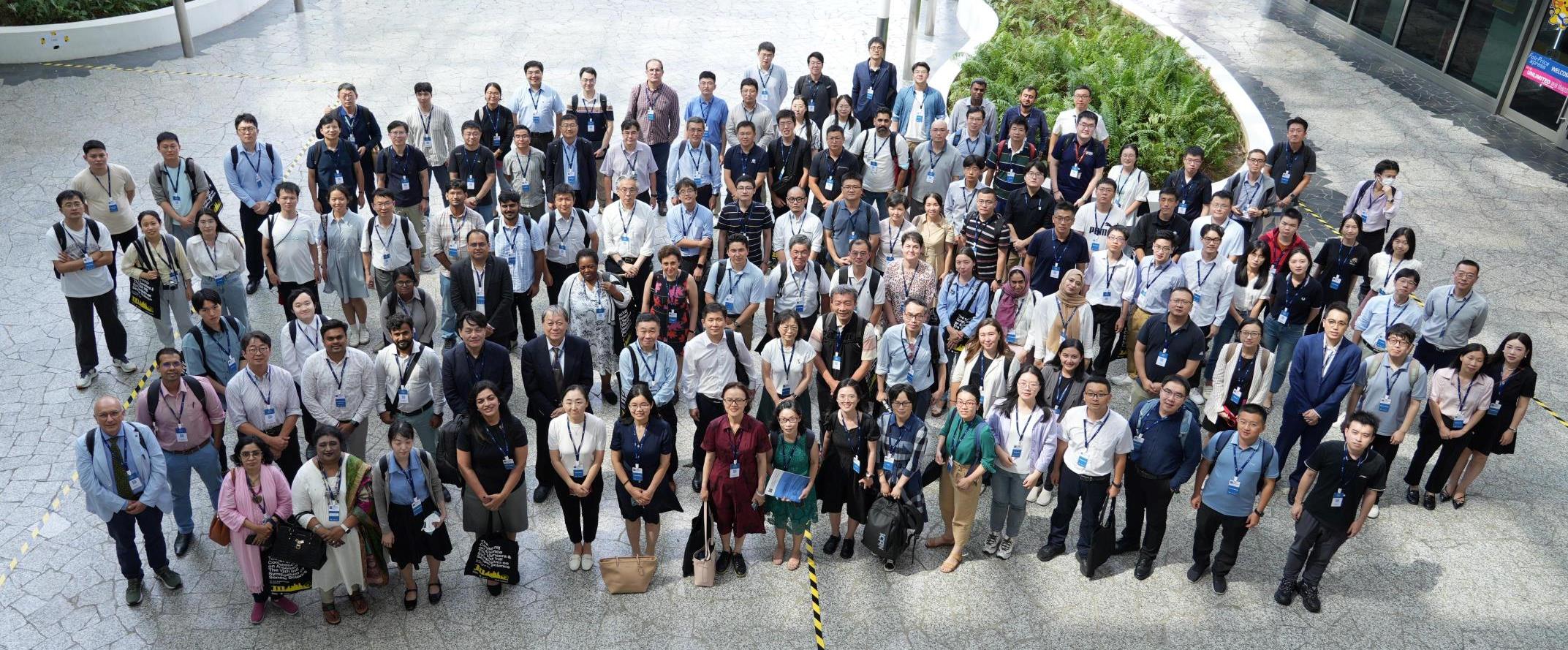
We accepted a total of 355 abstracts, featuring 772 authors from 28 countries. Over the course of the four-day event, 66 posters were displayed and 296 talks were delivered, including 4 plenary talks, 46 keynote speeches, 122 invited talks, and 124 selected oral presentations. View the event gallery here.
I am pleased to announce the winners of the four awards, including Best Presentation and Best Poster, recognizing the contributions of our participants during the conference.
Looking ahead, the 2nd International Conference on AI Sensors and Transducers is scheduled to take place from 29 July to 5 August, 2025, in Bangkok, Thailand.
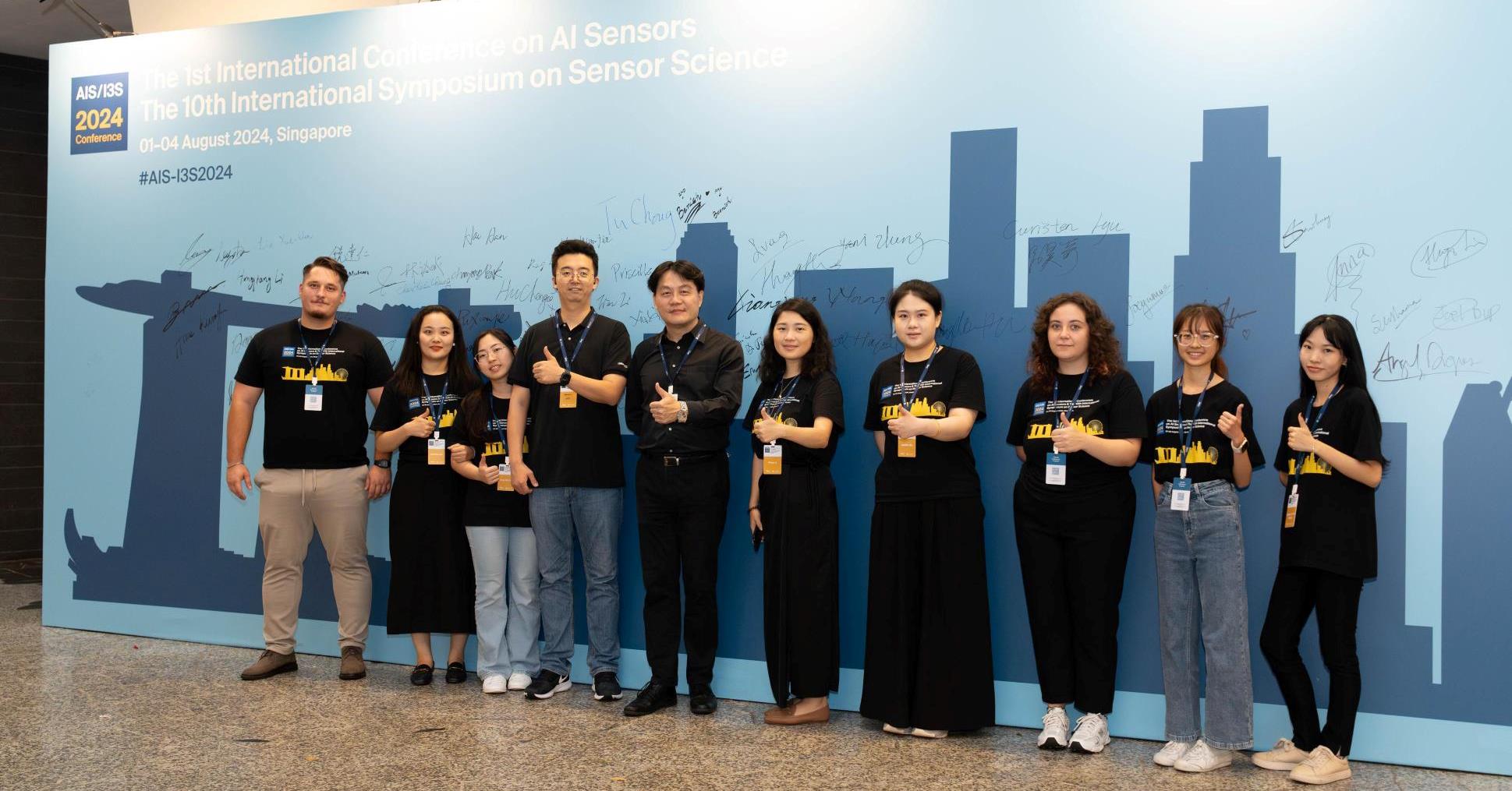
Thank you to our Conference team, including Ionut Spatar, Teodora Nicoleta Cremene, Ang Kai Lin, Benjamin Tay, Leong Jin Yue Esther, Wong Jolin, Judith Wu, Alethea Liu and Flora Li, who were involved in making this event a success. A big thank-you also goes to our local MDPI colleagues for their support: Yu Nwe Soe, Hen Chu Yang, Kwah Zhi En Watcharapong, Zephan Yang, Daphne Neo, Huimin Cheng, Nathan Li and Ting Yin.
Upcoming In-Person Event
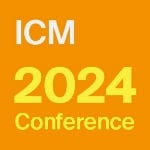
25–27 September, 2024
The 5th International Conference on Materials: Advances in Material Innovation
Location: Basel, Switzerland
ICM 2024 will unite experts to share insights on recent advancements in Materials Characterization, Processing and Manufacturing.
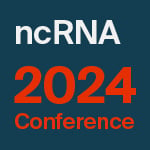
7–9 October, 2024
Non-coding RNA World 2024: Exploring Mechanisms, Designing Medicines
Location: Basel, Switzerland
ncRNA 2024 will explore the latest advances in the field, covering topics from basic biology to medical and technological applications.
Find more upcoming MDPI events here.
Closing Thoughts

The 2nd Sustainable Publishing Forum
In 2022, the International Association of Scientific, Technical and Medical Publishers (STM) outlined three goals to reflect the academic community’s shared aspirations: promoting Open Science, maintaining research integrity and fulfilling social responsibility. Open Science has evolved from the Open Access movement of the early 2000s to become a preferred model in academic publishing. Publishers and academic journals play a crucial role in ensuring research integrity, with efforts to prevent misconduct markedly on the increase now.
As the world faces sustainability challenges, the academic publishing industry is increasingly committed to contributing the achievement of the United Nations Sustainable Development Goals (SDGs). Many publishers are implementing strategies to support these objectives, including ours, which you can view here.
The 2nd MDPI Sustainable Publishing Forum provided a platform for global editors and publishers to discuss these themes, aiming to strengthen collaboration and advance the contributions that scientific publishing can make to academia and society.
“Open Science has evolved to become a preferred model in academic publishing”
The 2nd Sustainable Publishing Forum
We hosted MDPI’s 2nd Sustainable Publishing Forum in Beijing, China, on 15–16 August, attracting nearly 120 attendees from local and international publishers, university presses, scientific and technical journal associations, libraries and the Chinese Academy of Sciences. The event focused on promoting Open Science, maintaining research integrity, and fulfilling social responsibility.
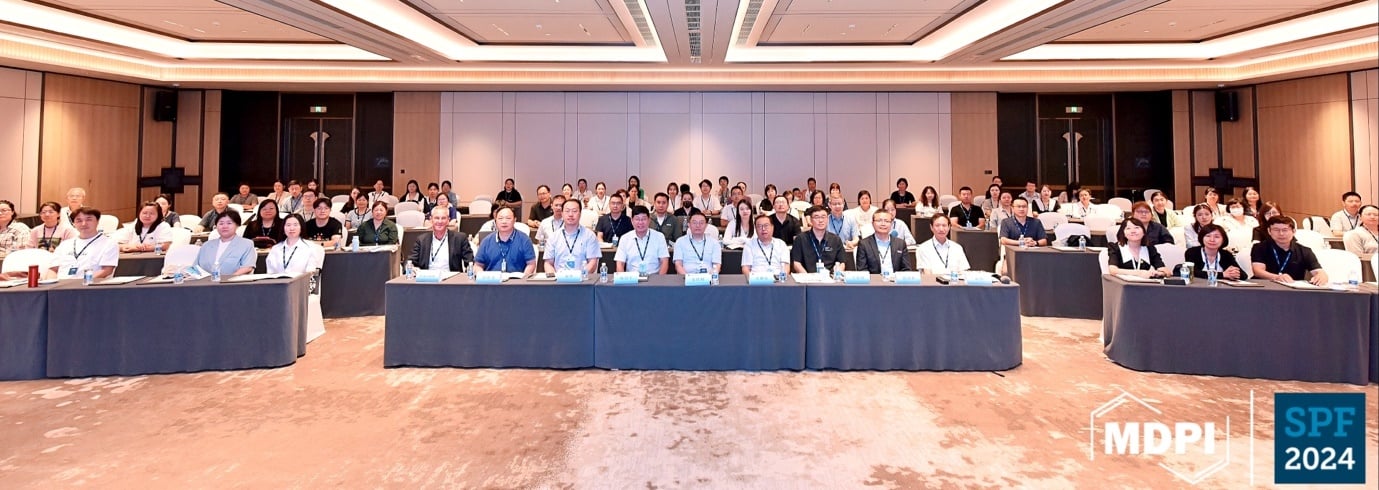
This was an excellent opportunity for us to share more with conference attendees about the approach of our research integrity team. Our Head of Publishing, Peter Roth, also participated, speaking on how to identify and avoid predatory publishers and about the principles that underpin ethical academic publishing.
I extend my thanks to all of our conference speakers, including Hylke Koers (STM Solutions), who presented on STM Trends 2028 and shared insights on the STM Integrity Hub, of which MDPI is a member.
Chief Executive Officer
MDPI AG
29 August 2024
Horticulturae | Invitation to Read the 2022–2023 Highly Cited Papers in the Section “Plant Pathology and Disease Management (PPDM)”
It is our honor to present the highly cited papers published by Horticulturae (ISSN: 2311-7524) in 2022 and 2023 in the Section “Plant Pathology and Disease Management (PPDM)”. We would like to take this opportunity to acknowledge the outstanding individuals and teams whose work inspires fellow researchers and profoundly influences the field of horticulture science. We invite you to read the outstanding works listed below.
1. “Antioxidant, Antimicrobial, and Anti-Insect Properties of Boswellia carterii Essential Oil for Food Preservation Improvement”
by Petra Borotová, Natália Čmiková, Lucia Galovičová, Nenad L. Vukovic, Milena D. Vukic, Eva Tvrdá, Przemysław Łukasz Kowalczewski, Maciej Ireneusz Kluz, Czeslaw Puchalski, Marianna Schwarzová et al.
Horticulturae 2023, 9(3), 333; https://doi.org/10.3390/horticulturae9030333
Available online: https://www.mdpi.com/2311-7524/9/3/333
2. “Apiaceae Family as a Valuable Source of Biocidal Components and their Potential Uses in Agriculture”
by Punniamoorthy Thiviya, Niroshan Gunawardena, Ashoka Gamage, Terrence Madhujith and Othmane Merah
Horticulturae 2022, 8(7), 614; https://doi.org/10.3390/horticulturae8070614
Available online: https://www.mdpi.com/2311-7524/8/7/614
3. “Antibacterial Activity of Ginkgo biloba Extracts against Clavibacter michiganensis subsp. michiganensis, Pseudomonas spp., and Xanthomonas vesicatoria”
by Eva Sánchez-Hernández, Vicente González-García, Ana Palacio-Bielsa, Belén Lorenzo-Vidal, Laura Buzón-Durán, Jesús Martín-Gil and Pablo Martín-Ramos
Horticulturae 2023, 9(4), 461; https://doi.org/10.3390/horticulturae9040461
Available online: https://www.mdpi.com/2311-7524/9/4/461
4. “Advances in the Strategic Approaches of Pre- and Post-Harvest Treatment Technologies for Peach Fruits (Prunus persica)”
by Jin Song Shin, Han Sol Park, Ki Won Lee, Ji Seop Song, Hea Yeon Han, Hye Won Kim and Tae Jin Cho
Horticulturae 2023, 9(3), 315; https://doi.org/10.3390/horticulturae9030315
Available online: https://www.mdpi.com/2311-7524/9/3/315
5. “Black Rot of Grapes (Guignardia bidwellii)—A Comprehensive Overview”
by Márton Szabó, Anna Csikász-Krizsics, Terézia Dula, Eszter Farkas, Dóra Roznik, Pál Kozma and Tamás Deák
Horticulturae 2023, 9(2), 130; https://doi.org/10.3390/horticulturae9020130
Available online: https://www.mdpi.com/2311-7524/9/2/130
6. “Antioxidant Capacity and Shelf Life of Radish Microgreens Affected by Growth Light and Cultivars”
by Selma Mlinarić, Antonija Piškor, Anja Melnjak, Alma Mikuška, Martina Šrajer Gajdošik and Lidija Begović
Horticulturae 2023, 9(1), 76; https://doi.org/10.3390/horticulturae9010076
Available online: https://www.mdpi.com/2311-7524/9/1/76
7. “Phytochemical Screening and Antibacterial Activity of Taxus baccata L. against Pectobacterium spp. and Dickeya chrysanthemi”
by Eva Sánchez-Hernández, Vicente González-García, Jesús Martín-Gil, Belén Lorenzo-Vidal, Ana Palacio-Bielsa and Pablo Martín-Ramos
Horticulturae 2023, 9(2), 201; https://doi.org/10.3390/horticulturae9020201
Available online: https://www.mdpi.com/2311-7524/9/2/201
8. “Reactive Oxygen Species Metabolism Modulation on the Quality of Apple Fruits Inoculated with Penicillium expansum under Different Ambient pHs”
by Carelle Jimdjio Kouasseu, Xi Yang, Huali Xue, Yang Bi, Zhiguang Liu, Jihui Xi, Mina Nan and Dov Prusky
Horticulturae 2023, 9(5), 538; https://doi.org/10.3390/horticulturae9050538
Available online: https://www.mdpi.com/2311-7524/9/5/538
9. “The Effects of Plant Health Status on the Community Structure and Metabolic Pathways of Rhizosphere Microbial Communities Associated with Solanum lycopersicum”
by Afeez Adesina Adedayo, Ayomide Emmanuel Fadiji and Olubukola Oluranti Babalola
Horticulturae 2022, 8(5), 404; https://doi.org/10.3390/horticulturae8050404
Available online: https://www.mdpi.com/2311-7524/8/5/404
19 August 2024
Horticulturae | Invitation to Read the 2022–2023 Highly Cited Papers in the Section “Floriculture, Nursery and Landscape, and Turf”
It is our great honor to present the highly cited papers published by Horticulturae (ISSN: 2311-7524) from 2022 and 2023 in the Section “Floriculture, Nursery and Landscape, and Turf”. We would like to take this opportunity to acknowledge the outstanding individuals and teams whose work inspires fellow researchers and profoundly influences the field of horticultural science. We therefore invite you to read the outstanding works listed below.
1. “Combined Nano Silver, α-Aminoisobutyric Acid, and 1-Methylcyclopropene Treatment Delays the Senescence of Cut Roses with Different Ethylene Sensitivities”
by Suong Tuyet Thi Ha and Byung-Chun In
Horticulturae 2022, 8(6), 482; https://doi.org/10.3390/horticulturae8060482
Available online: https://www.mdpi.com/2311-7524/8/6/482
2. “Measuring the Supply Chain Performance of the Floricultural Sector Using the SCOR Model and a Multicriteria Decision-Making Method”
by Luís Oswaldo Rodríguez Mañay, Inmaculada Guaita-Pradas and Inmaculada Marques-Perez
Horticulturae 2022, 8(2), 168; https://doi.org/10.3390/horticulturae8020168
Available online: https://www.mdpi.com/2311-7524/8/2/168
3. “In Vitro Propagation of the Mount Parnitha Endangered Species Sideritis raeseri subsp. Attica”
by Konstantinos Bertsouklis, Panagiota Theodorou and Paraskevi-Evangelia Aretaki
Horticulturae 2022, 8(12), 1114; https://doi.org/10.3390/horticulturae8121114
Available online: https://www.mdpi.com/2311-7524/8/12/1114
4. “Chitosan Soaking Improves Seed Germination of Platycodon Grandiflorus and Enhances Its Growth, Photosynthesis, Resistance, Yield, and Quality”
by Hai Liu, Zhihong Zheng, Xue Han, Cheng Zhang, Haitao Li and Mingkai Wu
Horticulturae 2022, 8(10), 943; https://doi.org/10.3390/horticulturae8100943
Available online: https://www.mdpi.com/2311-7524/8/10/943
5. “The Contribution of Volatile Organic Compounds (VOCs) Emitted by Petals and Pollen to the Scent of Garden Roses”
by Matteo Caser and Valentina Scariot
Horticulturae 2022, 8(11), 1049; https://doi.org/10.3390/horticulturae8111049
Available online: https://www.mdpi.com/2311-7524/8/11/1049
6. “Effect of Flavonoid Dynamic Changes on Flower Coloration of Tulipa gesneiana ‘Queen of Night’ during Flower Development”
by Xueying Guo, Xueqing Fu, Xin Li and Dongqin Tang
Horticulturae 2022, 8(6), 510; https://doi.org/10.3390/horticulturae8060510
Available online: https://www.mdpi.com/2311-7524/8/6/510
7. “Preharvest Spraying of CaCl2 Alleviates the Scape Bending of Gerbera ‘Harmony’ Flowers by Strengthening the Pectin Crosslinks through Ca2+ Bonds”
by Jiwon Park and Wan Soon Kim
Horticulturae 2022, 8(6), 523; https://doi.org/10.3390/horticulturae8060523
Available online: https://www.mdpi.com/2311-7524/8/6/523
8. “Balance of Carotenoid Synthesis and Degradation Contributes to the Color Difference between Chinese Narcissus and Its Yellow-Tepal Mutant”
by Yiming Zhang, Yi Zhou, Yijing Wu, Junhuo Cai, Yiqiang Zhang, Jincai Shen, Shibin Wu, Wenjie Liu, Ming Cai, Tangren Cheng et al.
Horticulturae 2022, 8(8), 727; https://doi.org/10.3390/horticulturae8080727
Available online: https://www.mdpi.com/2311-7524/8/8/727
9. “Effects of Potassium Application on Lilium davidii var. unicolor Growth, Polysaccharide Accumulation, and Metabolism”
by Xiaorong Sha, Ping Zhang, Ying Yang, Hubai Bu, Ying Ma and Lei Jin
Horticulturae 2022, 8(10), 940; https://doi.org/10.3390/horticulturae8100940
Available online: https://www.mdpi.com/2311-7524/8/10/940
10. “Transcriptome Analysis of Ethylene Response in Chrysanthemum moriflolium Ramat. with an Emphasis on Flowering Delay”
by Hua Cheng, Min Zhou, Yuyang Si, Wenjie Li, Likai Wang, Sumei Chen, Fadi Chen and Jiafu Jiang
Horticulturae 2023, 9(4), 428; https://doi.org/10.3390/horticulturae9040428
Available online: https://www.mdpi.com/2311-7524/9/4/428
11. “Polyploid Induction and Karyotype Analysis of Dendrobium officinale”
by Yang Liu, Shan-De Duan, Yin Jia, Li-Hong Hao, Di-Ying Xiang, Duan-Fen Chen and Shan-Ce Niu
Horticulturae 2023, 9(3), 329; https://doi.org/10.3390/horticulturae9030329
Available online: https://www.mdpi.com/2311-7524/9/3/329
12. “Genome-Wide Identification, Characterization, and Expression Pattern of MYB Gene Family in Melastoma candidum”
by Hui Li, Xiaoxia Wen, Mingke Wei, Xiong Huang, Seping Dai, Lin Ruan and Yixun Yu
Horticulturae 2023, 9(6), 708; https://doi.org/10.3390/horticulturae9060708
Available online: https://www.mdpi.com/2311-7524/9/6/708
13. “UAV Photogrammetry-Based Apple Orchard Blossom Density Estimation and Mapping”
by Wenan Yuan, Weiyun Hua, Paul Heinz Heinemann and Long He
Horticulturae 2023, 9(2), 266; https://doi.org/10.3390/horticulturae9020266
Available online: https://www.mdpi.com/2311-7524/9/2/266
14. “Identification and Characterization of CCD Gene Family in Rose (Rosa chinensis Jacq. ‘Old Blush’) and Gene Co-Expression Network in Biosynthesis of Flower Scent”
by Fangfang Ji, Jie Wu and Zhao Zhang
Horticulturae 2023, 9(1), 115; https://doi.org/10.3390/horticulturae9010115
Available online: https://www.mdpi.com/2311-7524/9/1/115
15. “Analysis of Aroma Volatiles from Michelia crassipes Flower and Its Changes in Different Flower Organs during Flowering”
by Yubing Yong, Jieli Yuan, Xiaoling Jin, Yu Huang, Zhe Zhang, Yan Chen and Minhuan Zhang
Horticulturae 2023, 9(4), 442; https://doi.org/10.3390/horticulturae9040442
Available online: https://www.mdpi.com/2311-7524/9/4/442
16. “Response of Dahlia Photosynthesis and Transpiration to High-Temperature Stress”
by Jing-Jing Liu, Ying-Chan Zhang, Shan-Ce Niu, Li-Hong Hao, Wen-Bin Yu, Duan-Fen Chen and Di-Ying Xiang
Horticulturae 2023, 9(9), 1047; https://doi.org/10.3390/horticulturae9091047
Available online: https://www.mdpi.com/2311-7524/9/9/1047
17. “Supplemental Lighting Quality Influences Time to Flower and Finished Quality of Three Long-Day Specialty Cut Flowers”
by Caleb E. Spall and Roberto G. Lopez
Horticulturae 2023, 9(1), 73; https://doi.org/10.3390/horticulturae9010073
Available online: https://www.mdpi.com/2311-7524/9/1/73
19 August 2024
Horticulturae | Invitation to Read the 2022–2023 Highly Cited Papers in the Section “Protected Culture”
It is our honor to present highly cited papers published by Horticulturae (ISSN: 2311-7524) in 2022 and 2023 in the Section “Protected Culture”. We would like to take this opportunity to acknowledge the outstanding individuals and teams whose work inspires fellow researchers and profoundly influences the field of horticulture science. We invite you to read the outstanding works listed below.
1. “What You May Not Realize about Vertical Farming”
by Farzana A. Lubna, David C. Lewus, Timothy J. Shelford and Arend-Jan Both
Horticulturae 2022, 8(4), 322; https://doi.org/10.3390/horticulturae8040322
Available online: https://www.mdpi.com/2311-7524/8/4/322
2. “Disinfection Efficacy of Tobamovirus-Contaminated Soil in Greenhouse-Grown Crops”
by Aviv Dombrovsky, Netta Mor, Shelly Gantz, Oded Lachman and Elisheva Smith
Horticulturae 2022, 8(7), 563; https://doi.org/10.3390/horticulturae8070563
Available online: https://www.mdpi.com/2311-7524/8/7/563
3. “The Inclusion of Green Light in a Red and Blue Light Background Impact the Growth and Functional Quality of Vegetable and Flower Microgreen Species”
by Matteo Orlando, Alice Trivellini, Luca Incrocci, Antonio Ferrante and Anna Mensuali
Horticulturae 2022, 8(3), 217; https://doi.org/10.3390/horticulturae8030217
Available online: https://www.mdpi.com/2311-7524/8/3/217
4. “Bio-Fertilizers Reduced the Need for Mineral Fertilizers in Soilless-Grown Capia Pepper”
by Hayriye Yildiz Dasgan, Mehmet Yilmaz, Sultan Dere, Boran Ikiz and Nazim S. Gruda
Horticulturae 2023, 9(2), 188; https://doi.org/10.3390/horticulturae9020188
Available online: https://www.mdpi.com/2311-7524/9/2/188
5. “Can Light Spectrum Composition Increase Growth and Nutritional Quality of Linum usitatissimum L. Sprouts and Microgreens?”
by Martina Puccinelli, Rita Maggini, Luciana G. Angelini, Marco Santin, Marco Landi, Silvia Tavarini, Antonella Castagna and Luca Incrocci
Horticulturae 2022, 8(2), 98; https://doi.org/10.3390/horticulturae8020098
Available online: https://www.mdpi.com/2311-7524/8/2/98
6. “Cleaning of Tomato brown rugose fruit virus (ToBRFV) from Contaminated Clothing of Greenhouse Employees”
by Jens Ehlers, Shaheen Nourinejhad Zarghani, Bärbel Kroschewski, Carmen Büttner and Martina Bandte
Horticulturae 2022, 8(8), 751; https://doi.org/10.3390/horticulturae8080751
Available online: https://www.mdpi.com/2311-7524/8/8/751
7. “Agrivoltaic System and Modelling Simulation: A Case Study of Soybean (Glycine max L.) in Italy“
by Eleonora Potenza, Michele Croci, Michele Colauzzi and Stefano Amaducci
Horticulturae 2022, 8(12), 1160; https://doi.org/10.3390/horticulturae8121160
Available online: https://www.mdpi.com/2311-7524/8/12/1160
8. “Soilless Tomato Production: Effects of Hemp Fiber and Rock Wool Growing Media on Yield, Secondary Metabolites, Substrate Characteristics and Greenhouse Gas Emissions”
by Annika Nerlich, Stefan Karlowsky, Dietmar Schwarz, Nadja Förster and Dennis Dannehl
Horticulturae 2022, 8(3), 272; https://doi.org/10.3390/horticulturae8030272
Available online: https://www.mdpi.com/2311-7524/8/3/272
9. “Characterizing the Spatial Uniformity of Light Intensity and Spectrum for Indoor Crop Production”
by László Balázs, Zoltán Dombi, László Csambalik and László Sipos
Horticulturae 2022, 8(7), 644; https://doi.org/10.3390/horticulturae8070644
Available online: https://www.mdpi.com/2311-7524/8/7/644
10. “Complementary Nutrients in Decoupled Aquaponics Enhance Basil Performance”
by Dylan Rodgers, Eugene Won, Michael B. Timmons and Neil Mattson
Horticulturae 2022, 8(2), 111; https://doi.org/10.3390/horticulturae8020111
Available online: https://www.mdpi.com/2311-7524/8/2/111
11. “Optimization of the Yield, Total Phenolic Content, and Antioxidant Capacity of Basil by Controlling the Electrical Conductivity of the Nutrient Solution”
by Xiaowei Ren, Na Lu, Wenshuo Xu, Yunfei Zhuang and Michiko Takagaki
Horticulturae 2022, 8(3), 216; https://doi.org/10.3390/horticulturae8030216
Available online: https://www.mdpi.com/2311-7524/8/3/216
12. “Vertical Greenery as Natural Tool for Improving Energy Efficiency of Buildings”
by Carlo Alberto Campiotti, Lorenzo Gatti, Alessandro Campiotti, Luciano Consorti, Patrizia De Rossi, Carlo Bibbiani, Rosario Muleo and Arianna Latini
Horticulturae 2022, 8(6), 526; https://doi.org/10.3390/horticulturae8060526
Available online: https://www.mdpi.com/2311-7524/8/6/526
13. “Effects of Shading Nets on Reactive Oxygen Species Accumulation, Photosynthetic Changes, and Associated Physiochemical Attributes in Promoting Cold-Induced Damage in Camellia sinensis (L.) Kuntze”
by Shah Zaman, Jiazhi Shen, Shuangshuang Wang, Yu Wang, Zhaotang Ding, Dapeng Song, Hui Wang, Shibo Ding, Xu Pang and Mengqi Wang
Horticulturae 2022, 8(7), 637; https://doi.org/10.3390/horticulturae8070637
Available online: https://www.mdpi.com/2311-7524/8/7/637
19 August 2024
MDPI’s 2023 Young Investigator Awards—Winners Announced

MDPI’s Young Investigator Awards recognize promising early career scientists, acknowledge their contributions, and foster collaboration within the scientific community. We are proud to announce the recipients for 2023, who were carefully selected by the journals’ esteemed Award Evaluation Committee.
We extend our heartfelt congratulations to the 79 winners of MDPI’s 2023 Young Investigator Awards for their excellent contributions in their research field. We look forward to seeing these rising stars continue to contribute to the advancement of science.
MDPI will continue to support and recognize the academic community. To explore details about the awardees by field, please visit the individual pages listed below:
Congratulations to all the winners for their exceptional contributions and dedication to advancing scientific research.
About MDPI Awards:
To support the academic community, particularly young researchers, and to enhance communication among scientists, MDPI journals regularly offer various awards to researchers in specific fields. These awards, serving as a source of inspiration and recognition, help to elevate the profiles of talented individuals who have made outstanding achievements and are making significant contributions to advancements in their respective fields.
To find out more about MDPI awards, please click here.
16 August 2024
Horticulturae | Invitation to Read the 2022–2023 Highly Cited Papers in the Section “Fruit Production Systems”
It is our honor to present highly cited papers published by Horticulturae (ISSN: 2311-7524) from 2022 and 2023 in the Section “Fruit Production Systems”. We would like to take this opportunity to acknowledge the outstanding individuals and teams whose work inspires fellow researchers and profoundly influences the field of horticulture science. We invite you to read the outstanding works listed below.
1. “Lightweight Apple Detection in Complex Orchards Using YOLOV5-PRE”
by Lijuan Sun, Guangrui Hu, Chao Chen, Haoxuan Cai, Chuanlin Li, Shixia Zhang and Jun Chen
Horticulturae 2022, 8(12), 1169; https://doi.org/10.3390/horticulturae8121169
Available online: https://www.mdpi.com/2311-7524/8/12/1169
2. “Automatic Pest Monitoring Systems in Apple Production under Changing Climatic Conditions”
by Dana Čirjak, Ivana Miklečić, Darija Lemić, Tomislav Kos and Ivana Pajač Živković
Horticulturae 2022, 8(6), 520; https://doi.org/10.3390/horticulturae8060520
Available online: https://www.mdpi.com/2311-7524/8/6/520
3. “Estimation of Vegetative Growth in Strawberry Plants Using Mobile LiDAR Laser Scanner”
by Kowshik Kumar Saha, Nikos Tsoulias, Cornelia Weltzien and Manuela Zude-Sasse
Horticulturae 2022, 8(2), 90; https://doi.org/10.3390/horticulturae8020090
Available online: https://www.mdpi.com/2311-7524/8/2/90
4. “A Fruit Colour Development Index (CDI) to Support Harvest Time Decisions in Peach and Nectarine Orchards”
by Alessio Scalisi, Mark G. O’Connell, Muhammad S. Islam and Ian Goodwin
Horticulturae 2022, 8(5), 459; https://doi.org/10.3390/horticulturae8050459
Available online: https://www.mdpi.com/2311-7524/8/5/459
5. “In-Orchard Sizing of Mango Fruit: 1. Comparison of Machine Vision Based Methods for On-The-Go Estimation”
by Chiranjivi Neupane, Anand Koirala and Kerry B. Walsh
Horticulturae 2022, 8(12), 1223; https://doi.org/10.3390/horticulturae8121223
Available online: https://www.mdpi.com/2311-7524/8/12/1223
6. “Monitoring Stem Water Potential with an Embedded Microtensiometer to Inform Irrigation Scheduling in Fruit Crops”
by Alan N. Lakso, Michael Santiago and Abraham D. Stroock
Horticulturae 2022, 8(12), 1207; https://doi.org/10.3390/horticulturae8121207
Available online: https://www.mdpi.com/2311-7524/8/12/1207
7. “Crop Diversification Effects on Soil Aggregation and Aggregate-Associated Carbon and Nitrogen in Short-Term Rainfed Olive Groves under Semiarid Mediterranean Conditions”
by Manuel González-Rosado, Luis Parras-Alcántara, Jesús Aguilera-Huertas and Beatriz Lozano-García
Horticulturae 2022, 8(7), 618; https://doi.org/10.3390/horticulturae8070618
Available online: https://www.mdpi.com/2311-7524/8/7/618
8. “’60 Years on’—Effects of Climatic Change on Tree Phenology—A Case Study Using Pome Fruit”
by Achim Kunz and Michael Blanke
Horticulturae 2022, 8(2), 110; https://doi.org/10.3390/horticulturae8020110
Available online: https://www.mdpi.com/2311-7524/8/2/110
9. “Table-Grape Cultivation in Soil-Less Systems: A Review”
by Antonino Pisciotta, Ettore Barone and Rosario Di Lorenzo
Horticulturae 2022, 8(6), 553; https://doi.org/10.3390/horticulturae8060553
Available online: https://www.mdpi.com/2311-7524/8/6/553
10. “Fruiting, Morphology, and Architecture of ‘Arbequina’ and ‘Calatina’ Olive Branches”
by Alessandro Carella, Roberto Massenti, Giuseppe Milazzo, Tiziano Caruso and Riccardo Lo Bianco
Horticulturae 2022, 8(2), 109; https://doi.org/10.3390/horticulturae8020109
Available online: https://www.mdpi.com/2311-7524/8/2/109
11. “Unlocking Plum Genetic Potential: Where Are We At?”
by Francesco Sottile, Chiara Caltagirone, Giovanna Giacalone, Cristiana Peano and Ettore Barone
Horticulturae 2022, 8(2), 128; https://doi.org/10.3390/horticulturae8020128
Available online: https://www.mdpi.com/2311-7524/8/2/128
12. “Rootstocks for Commercial Peach Production in the Southeastern United States: Current Research, Challenges, and Opportunities”
by Ricardo A. Lesmes-Vesga, Liliana M. Cano, Mark A. Ritenour, Ali Sarkhosh, José X. Chaparro and Lorenzo Rossi
Horticulturae 2022, 8(7), 602; https://doi.org/10.3390/horticulturae8070602
Available online: https://www.mdpi.com/2311-7524/8/7/602
13. “Sustainable Olive Culture under Climate Change: The Potential of Biostimulants”
by Maria Celeste Dias, Márcia Araújo, Sónia Silva and Conceição Santos
Horticulturae 2022, 8(11), 1048; https://doi.org/10.3390/horticulturae8111048
Available online: https://www.mdpi.com/2311-7524/8/11/1048
14. “The Link between Mineral Elements Variation and Internal Flesh Breakdown of ‘Keitt’ Mango in a Steep Slope Mountain Area, Southwest China”
by Xiaowei Ma, Jianfang Wang, Muqing Su, Bin Liu, Bang Du, Yuehua Zhang, Liping He, Songbiao Wang and Hongxia Wu
Horticulturae 2022, 8(6), 533; https://doi.org/10.3390/horticulturae8060533
Available online: https://www.mdpi.com/2311-7524/8/6/533
15. “Potential of Different Actinidia Genotypes as Resistant Rootstocks for Preventing Kiwifruit Vine Decline Syndrome”
by Giovanni Mian, Guido Cipriani, Simone Saro, Marta Martini and Paolo Ermacora
Horticulturae 2022, 8(7), 627; https://doi.org/10.3390/horticulturae8070627
Available online: https://www.mdpi.com/2311-7524/8/7/627
16. “Estimating the Ripeness of Hass Avocado Fruit Using Deep Learning with Hyperspectral Imaging”
by Yazad Jamshed Davur, Wiebke Kämper, Kourosh Khoshelham, Stephen J. Trueman and Shahla Hosseini Bai
Horticulturae 2023, 9(5), 599; https://doi.org/10.3390/horticulturae9050599
Available online: https://www.mdpi.com/2311-7524/9/5/599
17. “Mapping of the Susceptibility of Colombian Musaceae Lands to a Deadly Disease: Fusarium oxysporum f. sp. cubense Tropical Race 4”
by Gustavo Rodríguez-Yzquierdo, Barlin O. Olivares, Oscar Silva-Escobar, Antonio González-Ulloa, Mauricio Soto-Suarez and Mónica Betancourt-Vásquez
Horticulturae 2023, 9(7), 757; https://doi.org/10.3390/horticulturae9070757
Available online: https://www.mdpi.com/2311-7524/9/7/757
18. “In-Orchard Sizing of Mango Fruit: 2. Forward Estimation of Size at Harvest”
by Marcelo H. Amaral and Kerry B. Walsh
Horticulturae 2023, 9(1), 54; https://doi.org/10.3390/horticulturae9010054
Available online: https://www.mdpi.com/2311-7524/9/1/54
19. “Increased Temperature Affects Tomato Fruit Physicochemical Traits at Harvest Depending on Fruit Developmental Stage and Genotype”
by Victoria A. Delgado-Vargas, Oscar J. Ayala-Garay, Ma. de Lourdes Arévalo-Galarza and Hélène Gautier
Horticulturae 2023, 9(2), 212; https://doi.org/10.3390/horticulturae9020212
Available online: https://www.mdpi.com/2311-7524/9/2/212
20. “Effect of Rain Cover on Tree Physiology and Fruit Condition and Quality of ‘Rainier’, ‘Bing’ and ‘Sweetheart’ Sweet Cherry Trees”
by Simón Pino, Miguel Palma, Álvaro Sepúlveda, Javier Sánchez-Contreras, Mariana Moya and José Antonio Yuri
Horticulturae 2023, 9(1), 109; https://doi.org/10.3390/horticulturae9010109
Available online: https://www.mdpi.com/2311-7524/9/1/109
21. “The Effect of Drip Irrigation on the Length and Distribution of Apple Tree Roots”
by Pavel Svoboda, Jan Haberle, Michal Moulik, Ivana Raimanová, Gabriela Kurešová and Martin Mészáros
Horticulturae 2023, 9(3), 405; https://doi.org/10.3390/horticulturae9030405
Available online: https://www.mdpi.com/2311-7524/9/3/405
22. “Effects of Orchard Grass on Soil Fertility and Nutritional Status of Fruit Trees in Korla Fragrant Pear Orchard”
by Zengheng Wang, Rui Liu, Liang Fu, Shutian Tao and Jianping Bao
Horticulturae 2023, 9(8), 903; https://doi.org/10.3390/horticulturae9080903
Available online: https://www.mdpi.com/2311-7524/9/8/903
23. “Effect of Global Warming on the Yields of Strawberry in Queensland: A Mini-Review”
by Christopher Michael Menzel
Horticulturae 2023, 9(2), 142; https://doi.org/10.3390/horticulturae9020142
Available online: https://www.mdpi.com/2311-7524/9/2/142
24. “Fruit Quality of Satsuma Mandarins from Neretva Valley and Their Flavonoid and Carotenoid Content”
by Luna Maslov Bandić, Kristina Vlahoviček-Kahlina, Marija Sigurnjak Bureš, Katarina Sopko Stracenski, Nenad Jalšenjak, Goran Fruk, Ana Marija Antolković and Slaven Jurić
Horticulturae 2023, 9(3), 383; https://doi.org/10.3390/horticulturae9030383
Available online: https://www.mdpi.com/2311-7524/9/3/383
by Stephen Ross Williams, Arbind Agrahari Baniya, Muhammad Sirajul Islam and Kieran Murphy
Horticulturae 2023, 9(9), 1013; https://doi.org/10.3390/horticulturae9091013
Available online: https://www.mdpi.com/2311-7524/9/9/1013
16 August 2024
Horticulturae | Invitation to Read the 2022–2023 Highly Cited Papers in the Section “Postharvest Biology, Quality, Safety, and Technology”
It is our honor to present the most highly cited papers published by Horticulturae (ISSN: 2311-7524) in 2022 and 2023 in the Section “Postharvest Biology, Quality, Safety, and Technology”. We would like to acknowledge the outstanding individuals and teams whose work inspires our fellow researchers and influences the field of horticultural science. We invite you to read the outstanding works listed below.
1. “Postharvest Technologies of Fresh Citrus Fruit: Advances and Recent Developments for the Loss Reduction during Handling and Storage”
by Maria Concetta Strano, Giuseppe Altieri, Maria Allegra, Giovanni Carlo Di Renzo, Giuliana Paterna, Attilio Matera and Francesco Genovese
Horticulturae 2022, 8(7), 612; https://doi.org/10.3390/horticulturae8070612
Available online: https://www.mdpi.com/2311-7524/8/7/612
2. “Precooling and Cold Storage Methods for Fruits and Vegetables in Sub-Saharan Africa—A Review”
by Edna Makule, Noel Dimoso and Savvas A. Tassou
Horticulturae 2022, 8(9), 776; https://doi.org/10.3390/horticulturae8090776
Available online: https://www.mdpi.com/2311-7524/8/9/776
3. “Quality Characteristics of Oolong Tea Products in Different Regions and the Contribution of Thirteen Phytochemical Components to Its Taste”
by Zhihui Wang, Shuang Gan, Weijiang Sun and Zhidan Chen
Horticulturae 2022, 8(4), 278; https://doi.org/10.3390/horticulturae8040278
Available online: https://www.mdpi.com/2311-7524/8/4/278
4. “Evaluation of Proline-Coated Chitosan Nanoparticles on Decay Control and Quality Preservation of Strawberry Fruit (cv. Camarosa) during Cold Storage”
By Reza Bahmani, Farhang Razavi, Seyed Najmmaddin Mortazavi, Gholamreza Gohari and Antonio Juárez-Maldonado
Horticulturae 2022, 8(7), 648; https://doi.org/10.3390/horticulturae8070648
Available online: https://www.mdpi.com/2311-7524/8/7/648
5. “Emerging Technologies for Prolonging Fresh-Cut Fruits’ Quality and Safety during Storage”
by Rey David Iturralde-García, Francisco Javier Cinco-Moroyoqui, Oliviert Martínez-Cruz, Saúl Ruiz-Cruz, Francisco Javier Wong-Corral, Jesús Borboa-Flores, Yaeel Isbeth Cornejo-Ramírez, Ariadna Thalia Bernal-Mercado and Carmen Lizette Del-Toro-Sánchez
Horticulturae 2022, 8(8), 731; https://doi.org/10.3390/horticulturae8080731
Available online: https://www.mdpi.com/2311-7524/8/8/731
6. “Volatile Organic Compounds from Basil Essential Oils: Plant Taxonomy, Biological Activities, and Their Applications in Tropical Fruit Productions”
by Tibet Tangpao, Nutthawut Charoimek, Patipon Teerakitchotikan, Noppol Leksawasdi, Kittisak Jantanasakulwong, Pornchai Rachtanapun, Phisit Seesuriyachan, Yuthana Phimolsiripol, Thanongsak Chaiyaso, Warintorn Ruksiriwanich et al.
Horticulturae 2022, 8(2), 144; https://doi.org/10.3390/horticulturae8020144
Available online: https://www.mdpi.com/2311-7524/8/2/144
7. “On-Tree Fruit Bagging and Cold Storage Maintain the Postharvest Quality of Mango Fruit”
by Atif Nadeem, Zienab Fawzy Reiad Ahmed, Syed Bilal Hussain, Alaa El-Din K. Omar, Muhammad Amin, Saqib Javed, Amjad Ali, Sami Ullah, Kashif Razzaq, Ishtiaq A. Rajwana et al.
Horticulturae 2022, 8(9), 814; https://doi.org/10.3390/horticulturae8090814
Available online: https://www.mdpi.com/2311-7524/8/9/814
8. “Influence of Ripening Stage on Quality Parameters of Five Traditional Tomato Varieties Grown under Organic Conditions”
by María Concepción Ayuso-Yuste, Francisco González-Cebrino, Mercedes Lozano-Ruiz, Ana María Fernández-León and María Josefa Bernalte-García
Horticulturae 2022, 8(4), 313; https://doi.org/10.3390/horticulturae8040313
Available online: https://www.mdpi.com/2311-7524/8/4/313
9. “Bark Extract of Uncaria tomentosa L. for the Control of Strawberry Phytopathogens”
by Eva Sánchez-Hernández, Pablo Martín-Ramos, Jesús Martín-Gil, Alberto Santiago-Aliste, Salvador Hernández-Navarro, Rui Oliveira, and Vicente González-García
Horticulturae 2022, 8(8), 672; https://doi.org/10.3390/horticulturae8080672
Available online: https://www.mdpi.com/2311-7524/8/8/672
10. “Allium Species in the Balkan Region—Major Metabolites, Antioxidant and Antimicrobial Properties”
by Sandra Vuković, Jelena B. Popović-Djordjević, Aleksandar Ž. Kostić, Nebojša Dj. Pantelić, Nikola Srećković, Muhammad Akram, Umme Laila and Jelena S. Katanić Stanković
Horticulturae 2023, 9(3), 408; https://doi.org/10.3390/horticulturae9030408
Available online: https://www.mdpi.com/2311-7524/9/3/408
11. “Comparison of Aroma Trait of the White-Fleshed Peach ‘Hu Jing Mi Lu’ and the Yellow-Fleshed Peach ‘Jin Yuan’ Based on Odor Activity Value and Odor Characteristics”
by Wenjing Liu, Yuanyuan Zhang, Ruijuan Ma and Mingliang Yu
Horticulturae 2022, 8(3), 245; https://doi.org/10.3390/horticulturae8030245
Available online: https://www.mdpi.com/2311-7524/8/3/245
12. “Pectin-Based Edible Coating Combined with Chemical Dips Containing Antimicrobials and Antibrowning Agents to Maintain Quality of Fresh-Cut Pears”
by Alina Mădălina Pleșoianu and Violeta Nour
Horticulturae 2022, 8(5), 449; https://doi.org/10.3390/horticulturae8050449
Available online: https://www.mdpi.com/2311-7524/8/5/449
13. “Polyphenolic Profile, Antioxidant and Antidiabetic Potential of Medlar (Mespilus germanica L.), Blackthorn (Prunus spinosa L.) and Common Hawthorn (Crataegus monogyna Jacq.) Fruit Extracts from Serbia”
by Jelena S. Katanić Stanković, Nenad Mićanović, Nadja Grozdanić, Aleksandar Ž. Kostić, Uroš Gašić, Tatjana Stanojković and Jelena B. Popović-Djordjević
Horticulturae 2022, 8(11), 1053; https://doi.org/10.3390/horticulturae8111053
Available online: https://www.mdpi.com/2311-7524/8/11/1053
14. “Chitosan Coating Improves Postharvest Shelf-Life of Mango (Mangifera indica L.)”
by Nehar Parvin, Afrina Rahman, Jayanta Roy, Md Harun Rashid, Newton Chandra Paul, Md. Asif Mahamud, Shahin Imran, Md. Arif Sakil, F M Jamil Uddin, Md. Elias Molla et al.
Horticulturae 2023, 9(1), 64; https://doi.org/10.3390/horticulturae9010064
Available online: https://www.mdpi.com/2311-7524/9/1/64
15. “The Role of 1-methylcyclopropylene (1-MCP) and Salicylic Acid (SA) in Induced Resistance of Postharvest Fruits”
by Xiangzhi Meng, Jiazhen Fang, Maorun Fu, Wenxiao Jiao, Pengfei Ren and Xiaoying Yang
Horticulturae 2023, 9(1), 108; https://doi.org/10.3390/horticulturae9010108
Available online: https://www.mdpi.com/2311-7524/9/1/108
16. “Physiology and Application of Gibberellins in Postharvest Horticultural Crops”
by Zhang, Jingyu, Yuhao Cao, Jia Tang, Xujie He, Ming Li, Chen Li, Xiaolin Ren and Yuduan Ding
Horticulturae 2023, 9(6), 625; https://doi.org/10.3390/horticulturae9060625
Available online: https://www.mdpi.com/2311-7524/9/6/625
17. “Reduction of Pericarp Browning and Microbial Spoilage on Litchi Fruits in Modified Atmosphere, Packaging”
by Roberta Passafiume, Pasquale Roppolo, Ilenia Tinebra, Antonino Pirrone, Raimondo Gaglio, Eristanna Palazzolo and Vittorio Farina
Horticulturae 2023, 9(6), 651; https://doi.org/10.3390/horticulturae9060651
Available online: https://www.mdpi.com/2311-7524/9/6/651
18. “Application of Cinnamaldehyde Solid Lipid Nanoparticles in Strawberry Preservation”
by Shangjian Li, Jiajia Chen, Yuntong Liu, Qinhua Zheng, Weijian Tan, Xiaolin Feng, Kexin Feng and Wenzhong Hu
Horticulturae 2023, 9(5), 607; https://doi.org/10.3390/horticulturae9050607
Available online: https://www.mdpi.com/2311-7524/9/5/607
19. “Study on the Application of Electronic Nose Technology in the Detection for the Artificial Ripening of Crab Apples”
by Jianlei Qiao, Guoqiang Su, Chang Liu, Yuanjun Zou, Zhiyong Chang, Hailing Yu, Lianjun Wang and Ruixue Guo
Horticulturae 2022, 8(5), 386; https://doi.org/10.3390/horticulturae8050386
Available online: https://www.mdpi.com/2311-7524/8/5/386
20. “Determination of Phenolic Compounds Using HPLC-UV Method in Wild Fruit Species”
by Ana-Maria Stoenescu, Ion Trandafir and Sina Cosmulescu
Horticulturae 2022, 8(2), 84; https://doi.org/10.3390/horticulturae8020084
Available online: https://www.mdpi.com/2311-7524/8/2/84
7 August 2024
MDPI Insights: The CEO's Letter #14 - New Headquarters, Marketing, Poland

Welcome to the MDPI Insights: The CEO's Letter.
In these monthly letters, I will showcase two key aspects of our work at MDPI: our commitment to empowering researchers and our determination to facilitating open scientific exchange.
Opening Thoughts

MDPI Moves to New Headquarters in Basel, Switzerland

I am excited to share that MDPI has moved to a new state-of-the-art office space in Basel, Switzerland. This move consolidates our operations by bringing together our two previously separated Basel offices into one central location.
We are always growing our talent pool and encourage you to view our Careers Page for the positions available in Basel and across our offices.
New Address: Grosspeteranlage 5, CH-4052 Basel, Switzerland
Effective Date: 1 July 2024
This new chapter in our company’s journey is designed to continue our mission of positioning MDPI as a leader in Open Access (OA) publishing, highlighting our commitment to making scholarly research accessible to everyone.

Boasting modern amenities, improved meeting and event spaces designed to support our growing needs, the new location provides a more collaborative and efficient working environment for our employees. The location offers convenient accessibility to public transportation and is situated near the Basel SBB railway station, with a variety of nearby services and amenities.
In fact, I can see the trains right outside of my window as I write these lines!
This move marks an exciting milestone in MDPI’s development, and I am confident that the new headquarters will serve as an inspiring and productive space for everyone. We also very much look forward to welcoming visitors here. You can read more about MDPI's history here.
“This new chapter continues our mission of positioning MDPI as a leader in OA publishing”
For Those New to MDPI
A pioneer in scholarly, Open Access publishing, MDPI has supported academic communities since 1996. MDPI is leading the transition to Open Science by making a greater proportion of the research conducted worldwide free and accessible to everyone. To date, over 3.5 million researchers have entrusted MDPI with publishing their scientific discoveries. MDPI’s editorial process is bolstered by a network of dedicated reviewers, a team of 6,000 professional, well-trained staff members, and an in-house article submission platform designed to ensure efficient processes within its 440 fully Open Access titles. MDPI supports more than 800 academic institutions worldwide, helping them adhere to national mandates while facilitating authors’ publication in fully compliant (CC BY) Open Access journals.
Impactful Research
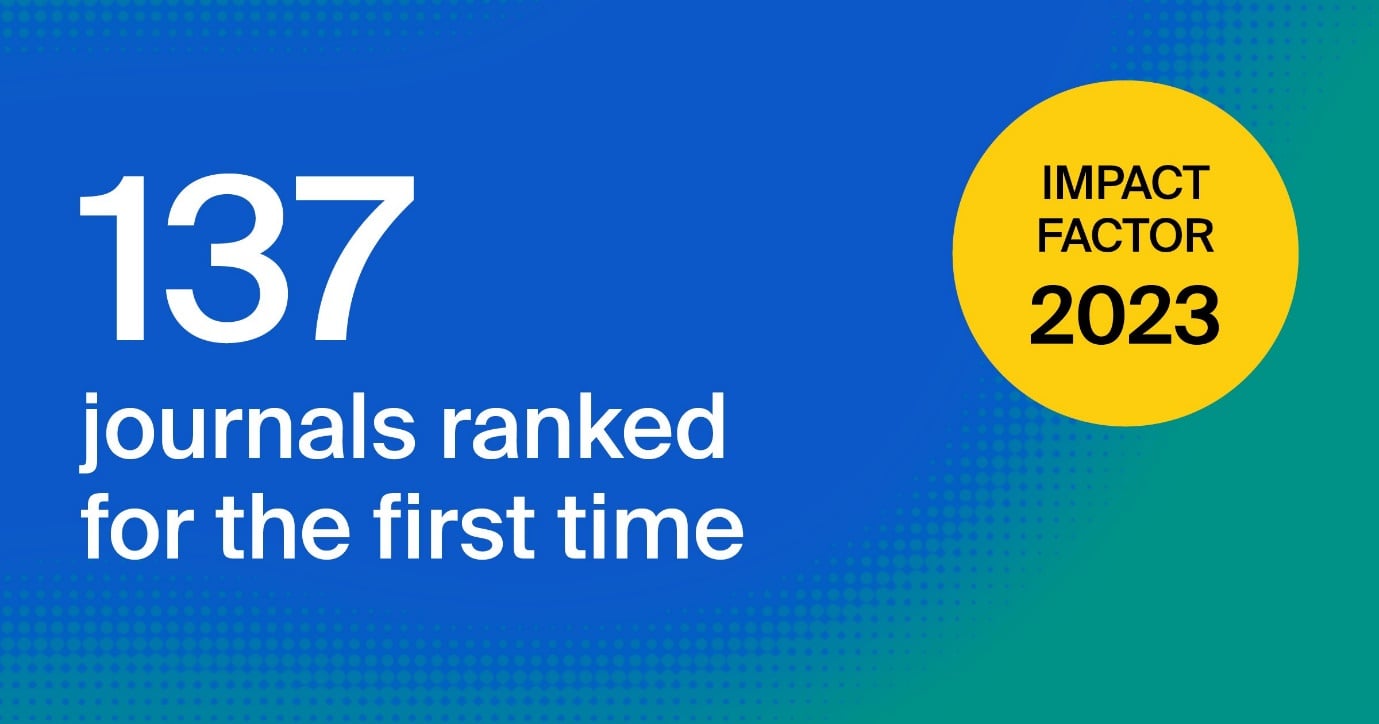
New and Emerging MDPI Journals Making an Immediate Impact
Unpacking some of the Impact Factor updates from the June CEO Letter, I wanted to dive a little deeper into the 137 MDPI journals which received Impact Factor for the first time.
Academic authors highly value efficient publishing processes, robust editorial support, and the opportunity to publish in high-impact journals. We are proud that our newly launched journals typically achieve coverage in the Emerging Sources Citation Index (ESCI) of the Web of Science within just a few years, with a median time of only three years from release to inclusion.
As part of our commitment to advancing academic research and providing high-quality OA publishing, we actively seek new research areas to expand our portfolio of journals. We have a proven track record of successfully establishing new journals.
Our dedicated teams excel in fostering dynamic editorial boards and working closely with Editors-in-Chief (EiC) to define the precise scope and focus of each new journal. Our expertise extends to collaborating with indexing services, ensuring that our journals comply with best practices and are indexed promptly in all relevant databases.
Emerging Titles Ranked for the First Time
Our commitment to excellence is reflected in the annual impact metrics released this past June. The latest edition of the Journal Citation Reports (JCR) showcases the integration of journals from the ESCI in the new unified category rankings, providing a simplified and more complete view of all journals within each subject category, including newly established titles.
Out of 137 new and developing MDPI journals ranked in the 2024 release, 79 are in the top half (Q1 or Q2) of their categories. Here is a breakdown of the number of MDPI’s ESCI-indexed journals by quartile in the JCR:
| Quartile | No. of journals |
| Q1 | 17 (12.4%) |
| Q2 | 62 (45.3%) |
| Q3 | 43 (31.4%) |
| Q4 | 15 (10.9%) |
| Not ranked (humanities-related journals) | 2 |
These rankings highlight our success in rapidly establishing high-impact new journals. Among those that made it directly into the top 25% of their category are the International Journal of Neonatal Screening, Journal of Xenobiotics, Polysaccharides, Smart Cities, and thirteen other journals.
You can browse MDPI journals by Indexing. Simply visit our Journals page and select from the list of Indexing bodies in the top left-hand corner.
Inside MDPI

MDPI Corporate Marketing Strategy and Team Meeting 2024
In July, I hosted the annual Corporate Marketing strategy and team-building activity with 15 of our team members.
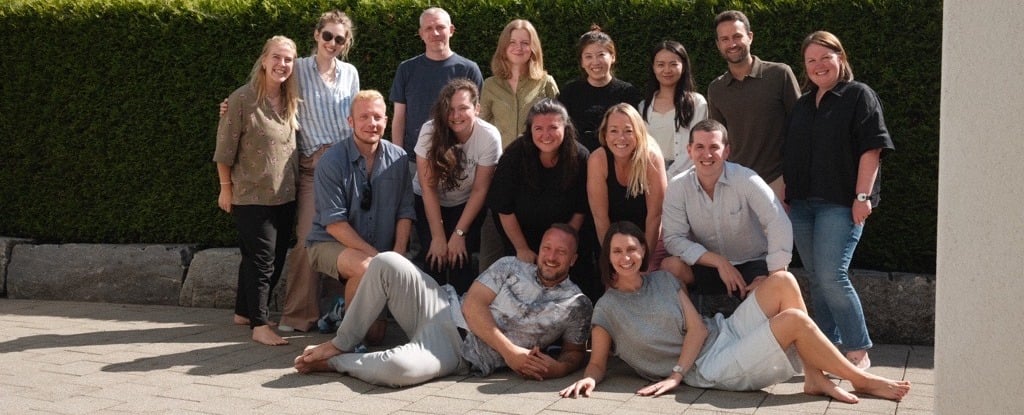
The aim was to align the Corporate Marketing strategy with MDPI's goal of becoming the world's most trusted OA publisher. While we provide a high-level publishing experience for our authors, as seen from our surveys, we need to keep building on our transparent and open communication to foster trust within the scholarly community and continue enhancing our reputation.
The Corporate Marketing team plays an important role as the mouthpiece for all our major activities within MDPI, especially those that model what it means to be a trusted partner. The purpose of the strategy meeting was to develop a feeling of trust in one another and an understanding of how to inspire trust in the stakeholders with whom we interact.
“We need to keep building on our transparent and open communication to foster trust within the scholarly community”

We conducted a set of activities to facilitate that sense of mutual trust and trustworthiness. Examples of some activities we worked on during this strategy-building event include:
- Exploring what trust means
- ‘Letter to self’
- ‘The brand I most trust’
- Most Trusted Academic Publisher
- ‘The brand I would like MDPI to become’
- ‘The 2029 MDPI Annual Report’
- Voice of Customer and Share of Voice – survey/data update on MDPI Brand Experience and Brand Perception
- Integrate Trust-Based Objective into Marketing Plan
- ‘Becoming the MDPI experience’
- ‘Trusting the next steps’
While two days is not enough to finalize a marketing strategy, it is sufficient to get everyone who attended into the mindset of the direction in which we are working. From here, we will develop a program with next steps on main projects, update communications, and collaborate with team leads to incorporate this approach into our work going forward.
As a marketing team, we can communicate our messages, but trust has to be built at every touchpoint in the stakeholder journey. Just talking about it isn’t enough. We need to be about it. That’s a role each of us plays, from editorial to IT, from marketing to HR. We must build trust from the inside out. It starts with each manager and resonates out via every team member.
As a company, our goal is to give all stakeholders with whom we interact – whether internal or external – the experience of working with an organization it can trust.
Coming Together for Science
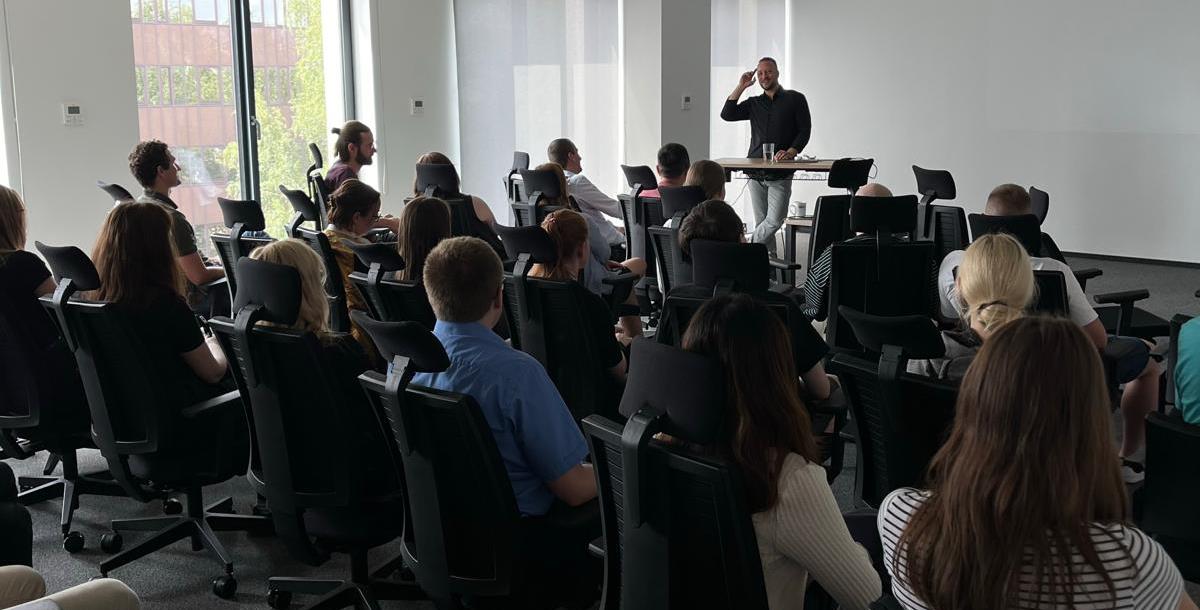
MDPI in Poland: Krakow Office
In July, I had the pleasure of visiting our Krakow office, following my recent trip to Warsaw to meet with the Polish Ministry of Science and Higher Education.

During these visits, I prioritized meeting with our Office Manager, Editorial Director, Group Leads, and members from various teams, including editorial, production, marketing, and journal relationship specialists, to understand their roles and current challenges. Instead of a formal presentation, I opted for an open discussion, sharing updates from headquarters to engage with colleagues in a more personal way.
Our Krakow office has many things to be proud of, including a large number of PhD colleagues (over a third of its staff holds a PhD degree). Krakow provides an opportunity for expanding beyond the 100 colleagues we currently have, by adding new hires in departments including editorial, production and marketing, among others.
About our Krakow office
- Opened in 2020
- 99 staff members as at 1 August 2024
- Main Departments include Editorial, Production, English Department, JRS, PR
Our Krakow office participates in international conferences, conducts author trainings and scholar visits, and engages in local market outreach. The office is also a member of the Polish Chamber of Commerce for High Technology (IZTECH) and is working on expanding its local engagement.
Krakow is the second-largest city in Poland, with a population of about 800,000. It also has a large student population of around 128,000, with seven universities. This means that roughly one in every eight residents is a student.
Poland and MDPI

Poland is a crucial market for MDPI. From 2020 to June 2024, Poland ranked 7th in submissions and 5th in publications for MDPI research articles. As at 31 July 2024, Poland ranks 7th in total MDPI publications, with approximately 70,000 research papers.
Between 2020 and June 2024, 61,500 authors from Poland published with MDPI. As at 30 June 2024, there are 1,205 active Editorial Board Members (EBMs) from Poland, with 661 EBMs (55% of the total) having an H-index over 25.
We also have four Editors-in-Chief (EiC) from Poland leading our journals: Coatings, Venereology, Advances in Respiratory Medicine, and Limnological Review, along with six Section EiC.
In 2023, we received approximately 21,000 submissions from Polish-affiliated authors, of which 12,032 were published.
“Poland is a crucial market for MDPI”
Meeting with Ministry of Education

On 22 July, we visited Warsaw to meet with the Polish Ministry of Science and Higher Education.
We were pleased to learn that they are strong supporters of the OA publishing model and value MDPI’s approach to the peer-review process, including our high ethical standards for quality control.
In 2023 Polish authors predominantly published their papers in OA, with MDPI holding the largest market share in OA publications within the country.
Our commitment to collaborating with Polish institutions is evident through our 33 Institutional Open Access Program (IOAP) agreements with prestigious institutions such as the University of Warsaw, the University of Wroclaw, the Jagiellonian University, and Gdańsk University of Technology. Through IOAP discounts, a healthy waiver rate, and our peer-review voucher system, we provide the Polish scholarly community with significant savings in OA publishing. The Minister greatly appreciated these efforts and our commitment to offsetting some of the APC costs.
We discussed industry concerns about the threat of papermills and presented the preventive measures MDPI has in place to mitigate this risk and uphold high ethical standards. We informed them of our commitment to combating papermills, including our involvement with United2Act and the STM Research Integrity Hub, as well as our efforts to expand our research integrity team and explore proactive measures.
Closing Thoughts

MDPI Thought Leadership Op-ed on Open Access is Now Live on Politico
I am pleased to share that our thought leadership Op-ed piece on Open Access (OA) is now live on Politico. This is a nice push for continued influence and support of OA among policymakers and industry leaders.
Why Politico?
Politico's reputation as a highly credible and influential news platform makes it an important venue to reach key opinion leaders (KOL) from academia, policymakers, and thought leaders from many industries. This visibility helps promote the OA philosophy.
Open Access: A Moral Imperative for Progress
In this piece, I discuss the necessity of making scientific research freely available to all. I argue that publicly funded research should be publicly accessible, highlighting how OA democratizes scientific knowledge, accelerates research availability, and fosters collaboration.
“Open Access is a fundamental right for all citizens”
Democratizing scientific communication
The impulse to democratize scientific communication is nothing new. OA may seem like a recent innovation, but its principles have historical roots traceable to Europe in the 15th century. Just as the printing revolution accelerated the dissemination of new ideas, OA publishing unlocks new scientific insights that would otherwise only be accessible to a few.
Benefits for scholars: amplifying impact through Open Access
Authors publishing in an OA journal can expect more citations of their work, increasing its potential impact. Research findings that are freely available are more likely to be cited than those hidden behind a paywall. Freedom of access greatly increases the potential audience for each paper, fostering a sense of community among researchers worldwide. Heightened visibility can attract prospective collaborators and employers for young scientists. At MDPI, we believe that all these factors can only accelerate the advance of science. Additionally, authors retain copyright in their work instead of signing it away, permitting broader dissemination under Creative Commons licenses and increasing its capacity for impact.
The moral imperative
OA is not just a matter of scientific policy; it is a fundamental right for all citizens and a prerequisite for a brighter, more informed future. Publicly funded research should be a top priority, and I am pleased to see policy moving in this direction. Our capacity to generate transformative scientific insights has to be democratized. The question today is no longer whether we can afford to embrace OA; rather, it is whether we can afford not to.
Chief Executive Officer
MDPI AG




